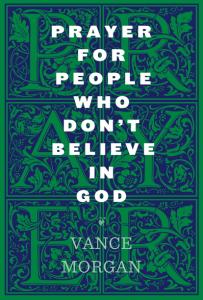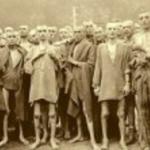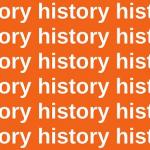I am currently in the middle of working through the proofs of my forthcoming book, the last time I have the opportunity to change anything. And, as my editor directly reminded me, my opportunity to change anything significant has passed. This final time through is only for punctuation, misspellings, and a few other minor matters. 
It’s an exciting time. For a writer, this point in the book process is what I imagine being 8.5 months pregnant is like–minus the discomfort, pain, and everything else about pregnancy that a man will never understand or experience. But I am the father of two children, and this is book number five. Waiting for the promised child does have a few parallels to waiting for your book.
The title of the new book is Prayer for People Who Don’t Believe in God,” forthcoming from Wood Lake Press. I’ll (obviously) be announcing its publication when it is out (looks like September or October). For the time being, and to whet your appetite, here’s the Introduction to the book.
Once upon a time two explorers came upon a clearing in the jungle. In the clearing were growing many flowers and weeds mixed together. The first explorer said, “Some gardener must tend this plot.” The other disagreed: “There is no gardener.” They pitched their tents set a watch. No gardener was ever seen. “But perhaps he is an invisible gardener,” thought the Believer. So they set up a barbed-wire fence, electrified it, and patrolled the area with bloodhounds. But no shrieks ever suggested that some intruder had received a shock. No movements of the wire ever betrayed an invisible climber. The bloodhounds never gave cry.
Yet the Believer was still not convinced. “But there is a gardener, invisible, intangible, insensitive to electric shocks, a gardener who has no scent and makes no sound, a gardener who comes secretly to look after the garden which he loves.” At last the Skeptic despaired: “But what remains of your original assertion? Just how is what you call an invisible, intangible, eternally elusive gardener any different from an imaginary gardener or even from no gardener at all?”
This story, or “parable,” was offered at the beginning of an academic symposium by British philosopher Anthony Flew several decades ago, as a way to get people thinking about their beliefs and the evidence that supposedly counts for or against those beliefs. The Believer in the story is bound and determined to believe that there is a gardener who takes care of the flowers in the clearing, even in the face of no supporting factual evidence. The Skeptic is only willing to believe in the gardener along with the Believer if shown relevant evidence. “I agree that there are flowers and that there are weeds here, but there are many possible explanations for this other than your gardener hypothesis,” the Skeptic might say. “Let’s test your hypothesis.”
When it turns out that the Believer doesn’t need evidence to support her belief, and that apparently contrary evidence does not count against her belief, the Skeptic knows that the conversation has come to an end.
When I was first approached to write about what prayer might mean to those for whom many or all of the traditional descriptions of prayer have failed, as well as to those for whom various traditional models of God are no longer meaningful, I thought of this story. For those raised in a traditional Christian framework of belief, as I was, prayer in its most basic sense is the human attempt to communicate with what is greater than us. Prayer was essential to our Baptist belief, but even though others seemed to take to prayer like ducks to water, it was a mystery to me. My mother suggested frequently that I should just talk to God the same way I talked to her. This never struck me as one of my mother’s better pieces of advice, since I clearly couldn’t talk to an invisible, far away, scary “something” in the same way I could talk to her. But I did learn, as all good Baptist kids learned, how to conjure up a convincing sounding prayer at the drop of a hat. It just never seemed to go past the ceiling.
In many ways, I have not advanced very far in the more than half century that has passed since I struggled with prayer as a child. I have been a college professor for 30 years, but this is not an academic book, nor is it a “how-to” document. No amount of education makes one an expert at prayer. I have read a great deal about prayer over the years, but it is a lot easier to read about prayer than to actually do it. Although I don’t claim to know what prayer is I do have a great deal of experience with various activities that others in my life have claimed to be prayer. Over the years I have been exposed to many styles of prayer, including unscripted petitions of essay length, poetic expressions read from a book, rote recitations that no one pays much attention to, pronouncements with physical accompaniment such as laying on of hands, communications in a “prayer language,” and more. Shouted, whispered, forceful, timid, begging, demanding. Each has been presented as the most or only effective way of praying.
The only common denominator is that, more often than not, nothing happened. Things kept bouncing off the ceiling. For the most part, my experience with and attitudes about prayer are similar to what Christian Wiman describes in My Bright Abyss:
I have never felt comfortable praying. I almost feel I should put the word in quotes, as I’m never quite sure that what I do deserves the name. I have a little litany of stations through which I move – thank you, help me, be with, forgive – but mostly I simply try to subject myself to the possibility of God. I address God as if.
And perhaps that’s where the life of faith, and its companion activities such as prayer, begins – with opening oneself to “the possibility of God.”
In my youth, I learned to interpret events, no matter what happened, as an “answer to prayer,” even though, just as the Skeptic suggests in the gardener story, virtually every answer to prayer could just as easily have been explained in ways that did not involve God. And God’s choice of which prayers to answer seemed random at best. People reported finding a convenient parking spot in a crowded supermarket lot in answer to their prayers, but others afflicted with cancer, who were the subject of fervent and regular prayers, died just as those who were not prayed for did. Good people suffered and bad people prospered whether prayers were offered or not. As Annie Dillard writes in For the Time Being, there comes a time in every believer’s life when the dark suspicions percolating below the surface become pressing.
Are we only talking to ourselves in an empty universe? The silence is often so emphatic. And we have prayed so much already…Who is like you, O Lord, among the silent, remaining silent through the suffering of His children?
Throughout my life, my attitudes about prayer have always been a direct reflection of my attitudes about what is greater than us. I suspect that I am not alone in this. Many contemporary Christians find themselves gripped by the power of the Christian faith but are unable or unwilling to endorse or engage with many of its traditional trappings, including prayer. One of these Christians asked me recently whether prayer still has any meaning for someone who is no longer sure about what, if anything, is on the receiving end. If God or the divine isn’t a “being” out there “listening,” what are we doing when we pray? If we’re not trying to connect with the kind of God who takes notes, answers “yes” or “no,” and grants and withholds favours, what or whom are we trying to connect with?
If you have ever asked these or similar questions, I invite you to keep reading. I don’t claim to know the answers to these questions, but perhaps we can make some progress together. The title of this short book, Prayer for People Who Don’t Believe in God, is a nod toward what I have told professed atheists in the past who, when discovering that (against their preconceptions) I am a person of faith, say something like, “I’m an atheist; I don’t believe in God.” After asking them to describe the God they don’t believe in, I invariably say that “I don’t believe in that God either.”
As I began getting my thoughts together for this book, I started by making a couple of lists, first of things that I do not believe prayer is, and second of things that prayer might be. I found that the first list was much easier to compile, because there are many gods in whom I no longer believe. Attempts to communicate with them are guaranteed to fail and produce frustration. The second list was more difficult to put together, and is far more tentative. In other words, I’m much more sure about what prayer is not (Chapters 1–5) than I am about what it might be (Chapters 6–10). Neither list is exhaustive; I’m sure you will have several items to add to each list. Working only with the assumption that prayer might have value even for those who are not sure what or who God is, let’s begin.












